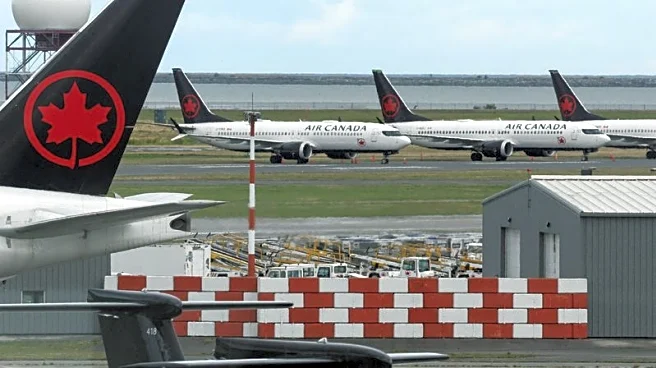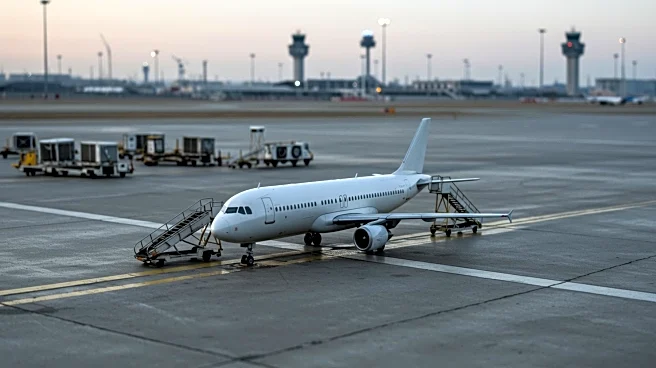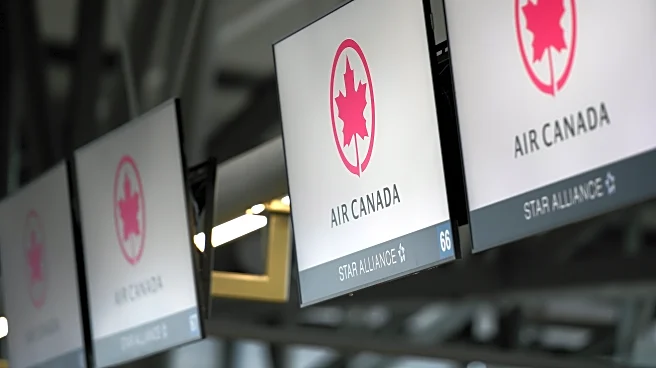What's Happening?
Air Canada is set to resume flights after the Canadian government issued a directive to end a strike by flight attendants. The strike, which began on Saturday, led to the suspension of approximately 700 daily flights, affecting over 100,000 passengers. The Canadian Industrial Relations Board (CIRB) ordered Air Canada and Air Canada Rouge flight attendants to return to work by 2 p.m. ET. The strike was initiated due to unresolved contract negotiations, with the union demanding compensation for time spent on the ground between flights. The government has mandated binding arbitration to resolve the contract impasse.
Why It's Important?
The strike's resolution is crucial for Air Canada, as it impacts thousands of passengers and the airline's operations. The government's intervention highlights the importance of maintaining labor relations and ensuring service continuity in the aviation industry. The strike underscores the challenges in negotiating fair compensation for flight attendants, a key issue in labor disputes. The resolution through binding arbitration may set a precedent for future negotiations, affecting labor policies and union strategies in Canada.
What's Next?
Air Canada will gradually resume flights, with some cancellations expected over the next 7-10 days as schedules stabilize. The CIRB's directive extends the terms of the expired collective agreement until a new one is reached. The Canadian Union of Public Employees (CUPE) may continue to push for negotiated solutions, while Air Canada focuses on restoring normal operations. The outcome of the binding arbitration will be closely watched by stakeholders, potentially influencing future labor negotiations in the aviation sector.
Beyond the Headlines
The strike and its resolution highlight the broader issue of labor rights and fair compensation in the airline industry. It raises questions about the balance between operational efficiency and employee welfare. The government's role in ending the strike may prompt discussions on labor policies and the effectiveness of binding arbitration in resolving disputes. The situation may lead to increased scrutiny of labor practices and contract negotiations within the industry.













